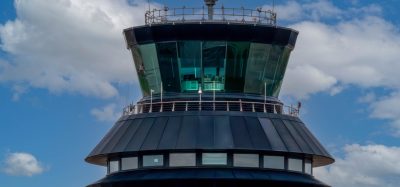Interview Spotlight: Nuctech discuss the biggest threat to airport security
- Like
- Digg
- Del
- Tumblr
- VKontakte
- Buffer
- Love This
- Odnoklassniki
- Meneame
- Blogger
- Amazon
- Yahoo Mail
- Gmail
- AOL
- Newsvine
- HackerNews
- Evernote
- MySpace
- Mail.ru
- Viadeo
- Line
- Comments
- Yummly
- SMS
- Viber
- Telegram
- Subscribe
- Skype
- Facebook Messenger
- Kakao
- LiveJournal
- Yammer
- Edgar
- Fintel
- Mix
- Instapaper
- Copy Link
Posted: 9 October 2019 | Nuctech | No comments yet
Li Huayu, Assistant President and General Manager of International Civil Aviation at Nuctech, discusses the current biggest threat to airport security, and further technologies that need to be developed to tackle airport threats.


How can airports ensure their checkpoint security is both quick and secure?
In our opinion, being quick tends to be the opposite to being secure. The whole industry has been trying to discover the optimum balance between the two, with security being the higher priority and the time taken for security checks to be controlled in an acceptable time frame. We endeavour to achieve the optimum balance between efficiency and security by using technology, operational processes, data analysis and training.
First of all, technology should be improved and promoted, including CT, millimetre wave (MMW) and ATRS technologies. With the development of such technologies, more objects could be detected, and detection is happening quicker and quicker.
Secondly, there is operational process improvement, for example, intelligence-driven, risk-based screening. Efficiency can be improved by focusing on unknowns while expediting the known travellers; improving the efficiency of security checks. The third approach is data utilisation, and risk-based screening is a case in point.
Airports must also consider security officer training, regarding behaviour detection, management of situation escalation and crowd management. Drills and exercises could be organised on a regular basis to make security officers more familiarised with procedures. We believe there will be a feasible and smart solution to ensure a quicker and more secure check to replace the current ‘stop-scan-go’ solution which fails to deal with increasing passenger numbers.
What do you see as the biggest risk to airport security at the moment?
The biggest risk to airport security currently lies in air cargo. At the time being, it is a common practice in the airport that the security check for passengers, hand luggage and checked baggage are under stringent standards, such as TSA and ECAC. On the other hand, the industry is still relying on conventional machines to detect IEDs for air cargo, which is quite a simple security check. There has been no standard for the airport to follow for air cargo inspection. What’s more, with the development of the e-commerce business, the whole industry has witnessed a dramatic rise in the volume of air cargo and there will be more to see in the future, which places huge pressure and risks on airport security.
There are many solutions that have been developed to meet said challenges, and we are waiting for guidance to be drafted by international organisations to eliminate the loophole.
In the future, how do you think technology will have further developed security screening?
As aforementioned, the whole industry has witnessed a sharp increase in both the volume of air cargo and passenger numbers, but the current technology is not able to meet these challenges. Therefore, the efficiency of security screening has become more and more important. In order to facilitate efficiency, airports are keen on implementing technology that could screen multiple targets at a time. With multiple-target screening technology, together with artificial intelligence and big data, we can differentiate high-risk and low-risk passengers, which allows airports to utilise screening resources in a more efficient manner. We believe that artificial intelligence and big data will therefore have a major say in the security screening concept of operation.
Issue
Related topics
Air freight and cargo, Baggage handling, Passenger volumes, Safety, Security


















